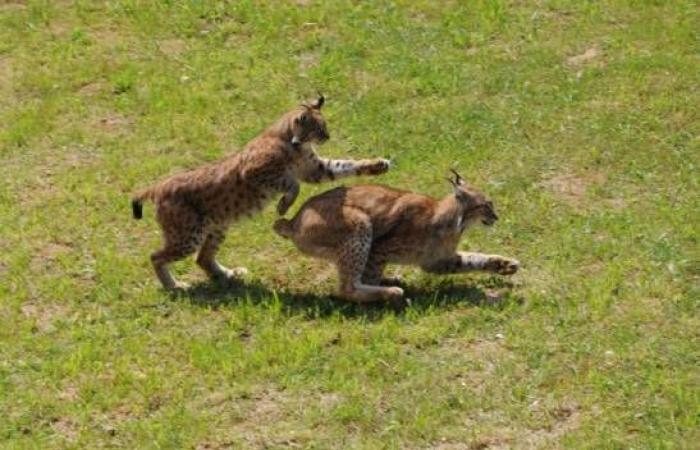The Iberian lynx has gone from the category of ‘Endangered’ to ‘Vulnerable’ in the Red List of Threatened Species™ of the IUCN, recovering from near extinction, thanks to sustained conservation efforts.
“As the IUCN Red List of Threatened Species celebrates its 60th anniversary, we must highlight its importance as the most comprehensive source of information on the state of global biodiversity. It is an essential tool that measures progress towards halting loss of nature and the achievement of global biodiversity goals for 2030. The improvement of the conservation status of the Iberian lynx on the Red List demonstrates that conservation success benefits both wildlife and communities,” stated Grethel AguilarDirector General of the IUCN.
The improvement in the conservation status of the Iberian lynx on the Red List demonstrates that conservation success benefits both wildlife and communities
Dr. Grethel Aguilar (IUCN)
The conservation status of the Iberian lynx (Lynx pardinus) has improved from ‘Endangered’ to ‘Vulnerable’, with an exponential increase in the population, which has gone from 62 mature individuals in 2001 to 648 in 2022. Currently, the total population, if young and mature lynxes are included , it is estimated at more than 2,000 copies.
Today, the total population, including young and mature lynxes, is estimated at more than 2,000 individuals.
Protect your habitat
Conservation efforts for this key species have focused on increasing the abundance of their preythe European rabbit (Oryctolagus cuniculus) in danger of extinction, protect and restore Mediterranean scrub and forest habitat and reduce deaths caused by human activity.
Expanding the genetic diversity of the species through translocations and a breeding program ex situ has been key to increasing their number. Since 2010, more than 400 Iberian lynx have been reintroduced to areas of Portugal and Spain. This species now occupies at least 3,320 km2which represents an increase compared to the 449 km2 of 2005.
still threatened
However, this species remains threatened, mainly due to possible fluctuations in the European rabbit population if new virus outbreaks. In addition, it is susceptible to diseases of domestic cats. The poaching and the abuses They remain threats, especially where busy roads cut through lynx habitat. Habitat alterations related to climate change are a growing threat.
“The largest recovery of a feline species ever achieved through conservation, this success is the result of committed collaboration between public bodies, scientific institutions, NGOs, private companies and community members, including local landowners, farmers, game wardens. hunting and hunters, and the financial and logistical support of the LIFE project of the European Union,” declared Francisco Javier Salcedo Ortizcoordinator of the LIFE Lynx-Connect project, who led the conservation action of the Iberian lynx.
“There is still much work to be done to ensure the survival of Iberian lynx populations and the recovery of the species throughout its native range. Looking ahead, there are plans to reintroduce the Iberian lynx to new locations in the center and the northern Spain,” he concludes.







